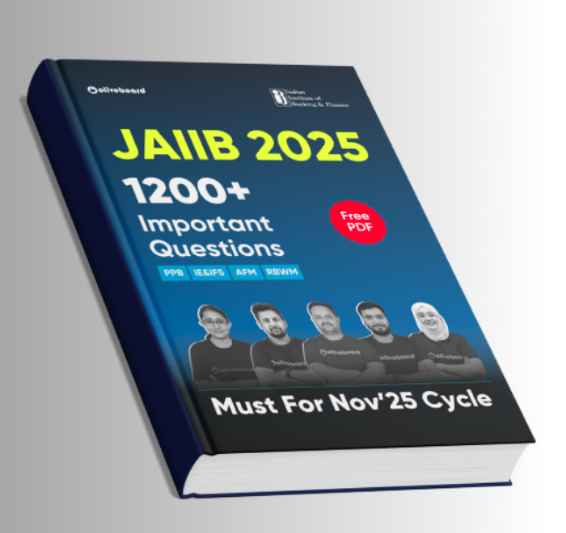
Exams

PFRDA Grade A Exam Syllabus & Exam Pattern

PFRDA Assistant Manager Syllabus
It is extremely important for the candidates to check out PFRDA Assistant Manager Syllabus as it helps them to move their preparation in the right direction. The syllabus for the PFRDA (Pension Fund Regulatory and Development Authority) Assistant Manager exam is designed to assess the candidate's knowledge and proficiency in various subjects. The key areas covered in the syllabus include General Awareness, English Language, Quantitative Aptitude, Reasoning, and Professional Knowledge.
PFRDA Assistant Manager Exam Pattern
The PFRDA Assistant Manager exam follows a structured pattern to evaluate candidates thoroughly. The exam consists of three phases: Phase I, Phase II and Phase III. Phase I is an online examination comprising multiple-choice questions covering topics such as English Language, Reasoning, General Awareness, etc. Phase II includes an online examination that focuses on Professional Knowledge and carries significant weightage in the final selection. The Phase III is the Interview.
PFRDA Assistant Manager Exam Pattern 2024
The aspirants must check out the detailed exam pattern for both the phases. We have mentioned all the important details you must know on Phase I, Phase II & Phase III PFRDA Assistant Manager Exam Pattern.
PFRDA Assistant Manager Exam Pattern - Phase I
Phase I is divided into two papers i.e. Paper 1 & Paper 2. Paper 1 contains MCQs for all streams & is common for all streams. Paper 2 contains MCQs on specialised subjects/ streams. The duration is 60 minutes for Paper 1 & 40 minutes for Paper 2. As far as negative marking is concerned, 1/4th of marks assigned to the question will be deducted as penalty. Check out the detailed Phase I Exam Pattern:
Note: Phase 1 will be Qualifying in nature (the marks will not be counted for final selection).
| Paper 1 Streams/ Subject | Maximum Marks | No. of Questions |
| English Language | 25 | 20 |
| Quantitative Aptitude | 25 | 20 |
| Test of Reasoning | 25 | 20 |
| General Awareness (including some questions related to Financial Sector) | 25 | 20 |
| Total | 100 | 80 |
| Paper 2 Streams/ Subject | Maximum Marks | No. of Questions |
| General Stream: MCQs on subjects Commerce, Accountancy, Management, Finance, Costing, Companies Act, Economics and Pension Sector. | 100 | 50 |
| MCQs on Specialised Subject Related to Streams (Information Technology, Finance and Accounts, Research (Economics), Legal and Official Language (Rajbhasha) | 100 | 50 |
PFRDA Assistant Manager Exam Pattern - Phase II
There shall be negative marking (1/4th of marks assigned to the question) only for the Paper 2 in Phase II. Also note that Paper 1 will be evaluated only of such candidates who obtain minimum qualifying marks in Paper 2. Check out the detailed Phase II Exam Pattern:
| Papers | Streams/ Subject | Maximum Marks | No. of Questions | Duration |
| Paper 1 | All Streams: English (Descriptive Test) to test the drafting skills {Precis/Essay/Comprehension} | 100 | 3 | 60 minutes |
| Paper 2 | General Stream: MCQs on subjects Commerce, Accountancy, Management, Finance, Costing, Companies Act, Economics and Pension Sector. | 100 | 50 | 40 minutes |
| Paper 2 | MCQs on Specialised subjects related to stream: Information Technology, Finance and Accounts Research (Economics), Legal and Official Language (Rajbhasha) | 100 | 50 | 40 minutes |
PFRDA Assistant Manager Exam Pattern - Phase III
The marks obtained in Phase II exam will be allotted a weightage of 85%, while the marks obtained in Phase III Interview will be allotted a weightage of 15%. Candidate may opt for interview either in Hindi or English.
PFRDA Assistant Manager Syllabus 2024
For the professional knowledge, the stream wise syllabus is common for both phases. Similarly, the syllabus for Paper 1 of Phase 1 is common for all streams. Check out the detailed syllabus below:
PFRDA Assistant Manager Syllabus 2024 - English
Check out the PFRDA Assistant Manager English Syllabus below:
- Reading comprehension
- Vocabulary
- Cloze test
- Fillers
- Sentence rearrangement
- Error detection
- Phrase replacement
- Sentence improvement
PFRDA Assistant Manager Syllabus 2024 - Reasoning
Check out the PFRDA Assistant Manager Reasoning Syllabus below:
- Blood Relation
- Puzzles
- Seating Arrangement
- Direction & distance
- Input output
- Coding decoding
- Syllogism
- Alphanumeric series
- Inequality
PFRDA Assistant Manager Syllabus 2024 - Quantitative Aptitude
Check out the PFRDA Assistant Manager Quantitative Aptitude Syllabus below:
- Data Interpretation (Bar Graph, Line Chart, Tabular, Caselet, Radar/Web, Pie Chart)
- Inequalities (Quadratic Equations)
- Number Series
- Approximation and Simplification
- Data Sufficiency
- Miscellaneous - Arithmetic Problems (HCF and LCM, Profit and Loss, SI & CI, Problem on Ages, Work and Time, Speed Distance and Time, Probability, Mensuration, Permutation and Combination, Average, Ratio and Proportion, Partnership, Problems on Boats and Stream, Problems on Trains, Mixture and Allegation, Pipes and Cisterns.
PFRDA Assistant Manager Syllabus 2024 - General Awareness
Check out the PFRDA Assistant Manager General Awareness Syllabus below:
- Current affairs
- Questions related to Finance Sector
- Awards & honours
- Summits & conferences
- Index
- Economic affairs
PFRDA Grade A Syllabus for Paper 2 - General Stream (Common for both phases)
A. Commerce & Accountancy
a) Accounting as a financial information system;
b) Accounting Standards with specific reference to Accounting for Depreciation, Inventories, Revenue Recognition, Fixed Assets, Foreign Exchange Transactions, Investments.
c) Cash Flow Statement, Fund flow statement, Financial statement analysis; Ratio analysis;
d) Accounting for Share Capital Transactions including Bonus Shares, Right Shares.
e) Employees Stock Option and Buy-Back of Securities.
f) Preparation and Presentation of Company Final Accounts.
B. Management
a) Management: its nature and scope; The Management Processes; Planning, Organization,
Staffing, Directing and Controlling;
b) The Role of a Manager in an Organization. Leadership: The Tasks of a Leader;
c) Leadership Styles; Leadership Theories; A successful Leader versus an effective Leader.
d) Human Resource Development: Concept of HRD; Goals of HRD;
e) Motivation, Morale and Incentives: Theories of Motivation; How Managers Motivate; Concept of Morale; Factors determining morale; Role of Incentives in Building up Morale.
f) Communication: Steps in the Communication Process; Communication Channels; Oral versus Written Communication; Verbal versus non-verbal Communication; upward, downward and lateral communication; Barriers to Communication, Role of Information Technology.
C. Finance
1) Financial System
a) Role and Functions of Regulatory bodies in Financial Sector.
2) Financial Markets
a) Primary and Secondary Markets (Forex, Money, Bond, Equity, etc.), functions, instruments, recent developments.
3) General Topics
a) Basics of Derivatives: Forward, Futures and Swap
b) Recent Developments in the Financial Sector
c) Financial Inclusion- use of technology
d) Alternate source of finance, private and social cost-benefit, Public-Private Partnership
e) Direct and Indirect taxes; Non-tax sources of Revenue, GST, Finance Commission, Fiscal Policy, Fiscal Responsibility and Budget Management Act (FRBM).
f) Inflation: Definition, trends, estimates, consequences, and remedies (control): WPI, CPI -
components andtrends.
D. Costing
1) Overview of Cost and Management Accounting - Introduction to Cost and Management
Accounting, Objectives and Scope of Cost and Management Accounting.
2) Methods of Costing - Single Output/ Unit Costing, Job Costing, Batch Costing, Contract Costing Process/Operation Costing, Costing of Service Sectors.
3) Basics of Cost Control and Analysis - (i) Standard Costing, (ii) Marginal Costing, (iii) Budget and Budgetary Control.
4) Lean System and Innovation:-
a) Introduction to Lean System
b) Just-in-Time (JIT)
c) Kaizen Costing
d) 5 Ss
e) Total Productive Maintenance (TPM)
f) Cellular Manufacturing/ One-Piece Flow Production Systems
g) Six Sigma (SS)
h) Introduction to Process Innovation and Business Process Re-engineering (BPR)
E. Companies Act
The Companies Act, 2013 – Specific reference to Chapter III, Chapter IV, Chapter VIII, Chapter X, Chapter XI, Chapter XII and Chapter XXVII.
F. Economics
a) Demand and Supply, Market Structures, National Income: Concepts and Measurement, Classical & Keynesian Approach Determination of output and employment, Consumption Function, Investment Function, Multiplier and Accelerator, Demand and Supply for Money, IS–LM, Inflation and Phillips Curve, Business Cycles
b) Balance of Payments, Foreign Exchange Markets, Inflation, Monetary and Fiscal Policy, Nonbanking Financial Institutions.
G. Pension Sector
a) Status of pension sector in India
b) Types of retirement schemes in India and their features
c) National Pension System
d) Atal Pension Yojana
e) Annuity Plans
f) Basics of investment
PFRDA Grade A Syllabus for Paper 2 - Information Technology (Common for both Phases)
Check out the syllabus below:
| Topic | Details |
| Database Concepts | ER‐model. Relational model: relational algebra, tuple calculus, Integrity constraints, normal forms. File organization, indexing (e.g., B and B+ trees), Transactions and concurrency control. |
| SQL Queries | Select, view, truncate, delete, update, alter, Inner join, different types of outer joins, use of aggregate functions, Union, intersection, except, in and exist clauses, nested queries |
| Programming Concepts (Java /C C++) | Program control (iteration, recursion, Functions), Scope of variables, Binding of variables & functions, Parameter passing, Functional and Logic Programming, OOPS Concepts, Inheritance, Class and object, Constructors, Functions, Exception Handling |
| Data Analytics Languages (Python / R) | Regex, Slicing, Data reshaping, Dataframes, Dictionaries and Sets, File Management, Classes and Functions, Data Mining, Lists, Importing and exporting data, charts and graphs |
| Algorithms for problem solving | Tree and graph traversals, connected components,Spanning trees, Shortest paths; hashing, Sorting, Searching; Design techniques (Greedy, DynamicProgramming, Divide- and-conquer) |
| NetworkingConcepts | ISO/OSI stack, LAN Technologies (Ethernet, Tokenring), TCP/UDP, IP, Basic concepts of switches, gateways, and routers, Application layer protocols (DNS, SMTP, POP, FTP, HTTP), Firewalls |
| Information & Cyber SecurityConcepts | Cyber Attacks, Software Development Security, Network security, Authentication, CIA - Confidentiality,Integrity and Availability, Network Audit, Systems Audit |
| Data warehousing | Data Extraction, Data Cleaning, Data Transformation,Data Loading, Metadata, Data Cube, Data Mart, Data Models, |
| Shell Programming | Shell Scripting Basics, Shell Variables, Shell Script Arguments, If Statement, Loop, Return, Basic UNIX commands |
PFRDA Grade A Syllabus for Paper 2 - Research (Economics) (Common for both phases)
- Economics: Demand and Supply, Market Structures, National Income, Determination of output and employment, Investment Function, Multiplier and Accelerator, Demand and Supply for Money, IS – LM, Inflation and Phillips Curve, Business Cycles, Inflation, Monetary and Fiscal Policy, Banking Functions, Public Goods, Tax & Non-Tax Revenue, Direct & Indirect Taxes, Fiscal Balance, Public Debt, Public Budget and Foreign Trade and Balance of Payments.
- Statistics and Econometrics: Measures of Central tendency & dispersions, Correlation, Sampling methods, Sampling Distribution, Statistical Inferences, Hypothesis testing, Regression Analysis, Panel Data Analysis, Time Series Properties and Analysis.
- Financial Institutions and Markets: Asymmetric Information, Market Model, Market Efficiency, Money, Credit and Capital Markets, Primary Market, Secondary Market, Commodity Markets, Mutual Funds, Stock Exchanges, Credit Rating Agencies, Pension And Insurance Markets, Foreign Exchange Markets, Role of International Financial Institutions, IS, IMF & World Bank.
PFRDA Grade A Syllabus for Paper 2 - Legal Stream (Common for both phases)
- PFRDA Act, 2013,
- IRDAI Act, 1999,
- SEBI Act, 1992
- Constitution of India –Preamble, Part I, Part III, Part IV, Part IVA, Part V, Part VI, Part VIII, Part IXA, Part IXB, Part XI, Part XII, Part XIII, Part XIV, Part XIVA, Part XX,
- Law of Contracts –Indian Contract Act, 1872 (Chapters I to VI and VIII to X), Indian Partnership Act, 1932, Specific Relief Act, 1963,
- Criminal Law –Indian Penal Code, 1860 (Chapters I, II, III, IV, V, VA, VI, IX, XVII, XXI, XXII,
XXIII); Code of Criminal Procedure, 1973, - Law of Evidence –Indian Evidence Act, 1872,
- Code of Civil Procedure, 1908 –Part I, Part II, Part III, Part IV, Part V, Part VII, Schedule-I,
- Administrative Law and Principles of Natural Justice,
- Jurisprudence and Interpretation of Statutes,
- Important Latin terms and maxims,
- Law of Torts and Consumer Protection Act, 2019,
- Arbitration and Conciliation Act, 1996 –Part I, Part III, Part IV,
- Transfer of Property Act, 1882 –Chapter III, Chapter IV, Chapter V,
- Law of Trusts –Parties to a Trust Deed and Duties of Trustees,
- Corporate Law –Companies Act, 2013 (Chapter I, Chapter II, Chapter III, Chapter IV, Chapter V, Chapter VII, Chapter VIII, Chapter IX, Chapter X, Chapter XI, Chapter XII, Chapter XIII, Chapter XV, Chapter XVI, Chapter XXVII, Chapter XXVIII, Chapter XXIX); Limited Liability Partnership Act, 2008; Insolvency and Bankruptcy Code, 2016 (Part I, Part II),
- Taxation –General principles
PFRDA Grade A Syllabus for Paper 2 - Finance and Accounts (Common for both Phases)
- The Basic Financial Statement
Trial Balance
o Balance Sheet
o Cash flow statement
o Income Statement - Analysis of Financial Statement Ratio
- Break Even Analysis
- IND AS
- Standard on Auditing
- Cost accounting concepts (basics)
o Marginal costing
o Cost volume profit analysis
o Cost sheet
o Forecasting - Management accounting
o Cost of capital
o Capital structure
o Capital budgeting
o Sources of finance - Corporate accounting
- Business law
o Negotiable instruments
o Contract act
o Partnership act
o Company law (Go through all these laws with amendments) - Income Tax Act
- GST
- Knowledge of IT and Digital Transaction
- Compliance of KYC Norms
- Financial System : Role and Functions of Regulatory bodies in Financial Sector.
- Financial Markets: Primary and Secondary Markets (Forex, Money, Bond, Equity, etc.), functions, instruments, recent developments.
- General Topics
a) Basics of Derivatives: Forward, Futures and Swap
b) Recent Developments in the Financial Sector
c) Financial Inclusion- use of technology
d) Alternate source of finance, private and social cost-benefit, Public-Private Partnership
e) Direct and Indirect taxes; Non-tax sources of Revenue, Finance Commission, Fiscal Policy, Fiscal Responsibility and Budget Management Act (FRBM),
f) Inflation: Definition, trends, estimates, consequences, and remedies (control): WPI, CPI - components and trends.
g) Economics: Capital market, Money market, Micro and macro economics concepts and Updates related to money market and RBI policies
PFRDA Grade A Syllabus for Paper 2 - Official Language (Rajbhasha) (Common for both Phases)
- भारत सरकार की राजभाषा नीतत (Official Language Policy of the Govt. of India) सेसंबंधित प्रश्न
- हिन्दी सेअंग्रेजी अनुवाद [शब्द / वाक्ांश / वाक् / Terms / Phrases / Sentences]
- अंग्रेजी सेहिन्दी अनुवाद [शब्द / वाक्ांश / वाक् / Terms / Phrases / Sentences]
- हिन्दी सेअंग्रेजी - ववधिक शब्दावली (Legal Terminology)
- अंग्रेजी सेहिन्दी - ववधिक शब्दावली (Legal Terminology)
- हिन्दी सेअंग्रेजी – पेंशन / प्रशासतनक / बकैंकंग / प ंजी बाजार / अर्थशास्त्र / सामाजजक सुरक्षा शब्दावली (Pension / Administrative / Banking / Capital Market / Economics / Social Security Terminology)
- अंग्रेजी सेहिन्दी - पेंशन / प्रशासतनक / बकैंकंग / प ंजी बाजार / अर्थशास्त्र / सामाजजक सुरक्षा शब्दावली (Pension / Administrative / Banking / Capital Market / Economics / Social Security Terminology)
FAQs
A. Candidates are permitted to apply for a maximum of 2 streams only for which he/she is eligible to apply, as per their educational qualifications. Separate online applications for each stream will have to be submitted and requisite fees are to be paid for each application. In case a candidate applies more than once in a Single Stream and/ or applies for more than 2 Streams, only the latest applications shall be considered valid and the other applications shall be rejected.
A. The mode of selection would be a three-stage process i.e.
Phase 1 (online screening examination consisting of two papers of 100 marks each),
Phase 2 (online examination consisting of two papers of 100 marks each) and
Phase 3 (Interview).
A. The vacancies are yet to be released for Assistant Manager Post.
A. You would need to secure separate cut-offs in each paper as well as aggregate cut-off marks in Phase 1 to be shortlisted for Phase 2.
The minimum aggregate cut-off marks for being shortlisted for Phase 2 will be decided by the Authority in relation to the number of vacancies.
Marks obtained in Phase 1 shall be used only for shortlisting for Phase 2 and will not be counted for the final selection of the candidates.
A. About PFRDA: Pension Fund Regulatory and Development Authority (PFRDA/Authority), is a statutory regulatory body in the financial sector established under the PFRDA Act (23 of 2013) passed by the Parliament of India with the mandate to promote, develop and regulate the Pension Sector in India.
A. Presently, the gross emolument, including PFRDA's contribution towards the National Pension System (NPS), GradeAllowance, Special Allowance, Special Grade Allowance, Dearness Allowance, Local Allowance, Family Allowance, SpecialCompensatory Allowance, LearningAllowance and Housing Allowance, etc. at the minimum of scale, is approximately Rs. 1,40,000/- per month.
PFRDA Grade A Officer's Payscale: The pay scale of Officers in Grade ‘A' is Rs. 44500-2500(4)-54500-2850(7)-74450-EB-2850(4)- 85850-3300(1)-89150 (17 years).
Take a Free Mock Test Now!
 200 Marks
200 Marks
 130 Qs.
130 Qs.
 140 minutes
140 minutes
























